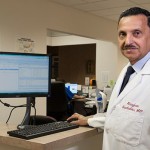The time is now! Exscribe EHR can help your practice prepare for MACRA
Is your practice ready for the upcoming changes to the Medicare Physician Reimbursement Program? With the activation of the Medicare Access and CHIP Reauthorization Act (MACRA), the program is about to undergo its most significant transformation in 50 years. MACRA, signed into law in 2015, replaces the current Medicare Reimbursement Schedule with a new pay-for-performance model. The new framework will reward healthcare providers for quality of care, not just volume of care, and combine existing CMS quality reporting programs into one new system. Today, adjusting to MACRA and obtaining a productive, user-friendly EHR is one of the most critical questions facing health care practices.
MACRA repeals the Sustainable Growth Rate (SGR) formula permanently, ending the cycle of automatic cuts to the Medicare Physician Fee Schedule (MPFS), a system that automatically changes fees for codes across different physician services. The law also overrides the 21.2 percent cut to Medicare physician payments that went into effect on April 1, 2015. Under MACRA payment updates will remain stable until 2019, at which time it will start rewarding value over volume of care in the payment models based on data gathered in the next two years.
On January 1, 2017, MACRA will essentially merge the MU program, the Physician Quality Reporting System (PQRS) program, and the Value-Based Payment Modifier (VBM) into a new program called Merit-Based Incentive Payments System (MIPS). Under this MIPS payment track, healthcare providers will receive an annual quality score determined by four critical components: meaningful use of EHR technology (formerly MU), quality (formerly PGRS and VBM), resource use, and clinical practice improvement. These elements will not be weighted equally, however, and EHR technology and quality components will account for 75 percent of a provider’s total score. Based on the composite MIPS performance score, providers will receive Positive, Negative, or Zero MIPS adjustments to their Medicare compensations. This is designed to reward good providers and penalize bad ones. Medicare reimbursements will then be adjusted up or down by at least 9 percent.
MIPS Eligible Professionals (EPs) for the first two years of the new program include physicians, clinical nurse specialists, nurse practitioners, nurse anesthetists, and physician assistants. For the third year and on, eligibility is expanded to physical or occupational therapists, audiologists, speech-language pathologists, nurse midwives, dietitians or nutrition professionals, clinical psychologists, and clinical social workers.
MACRA also establishes Advanced Alternative Payment Models (APMs), an alternative method for paying health care providers. APMs examples include Accountable Care Organizations, bundled payment models, and Patient Centered Medical Homes. For physicians who participate in qualified APMs at or above a certain threshold, MACRA provides them an annual lump sum bonus payment equivalent to 5 percent of their covered Medicare services and exempts them from MIPS. The threshold starts at 25 percent of either revenues or patient participation in the qualified APMs in 2019-2010 and increases to 75 percent by 2023. Participation other APMs below the will definitely affect the bottom line for physicians and practitioners.
President Obama signed MACRA into law over a year ago but small group practices are just starting to take steps to incorporate MIPS and alternative payment models (APMs) requirements into their workflow. Some steps, like using certified electronic health records, are critical for MIPS and APMs tracking. Physicians want to focus on the quality of the care they provide, not on detailed reporting. Using Exscribe’s EHR would allow orthopedic practices to do just that.
With MACRA on the horizon, the last thing orthopedic practices need is increased complexity.
Exscribe EHR is the first fully featured electronic health records system designed specifically to meet the needs of busy orthopedic practices. It has a suite of high-quality products and services that will allow practices – from solo practitioners to large university-owned practices – to thrive during this change. For example, one of the requirements to join or create a qualified APM under MACRA is the use of a certified EHR. Exscribe can fulfill that qualification for orthopedic providers looking to create an APM in a way that will support their specific practice needs. Under either payment model, providers must have EHR Data Upload ability to transfer patient information to MACRA reporting software. This requires a robust and up-to-date EHR, like Exscribe, to easily and securely share information.
Exscribe also makes it easy for orthopedic practices to track the quality of the care they provide. Under both APMs or MIPS methods, this will be exceptionally important. Exscribe has earned the Complete Ambulatory EHR Certification, giving it the federal government’s “Meaningful Use” stamp of approval. Orthopedic practices using Exscribe will easily be able to track and demonstrate Meaningful Use, categorized under MACRA as advancing care information, in their practice. This will make reporting easier and boost potential profits.
The benefits of this software go beyond MACRA adaptations. Exscribe EHR was developed by orthopedists for orthopedic practices. Most EHRs attempt to cover multiple specialties, leading to cluttered interfaces with features Orthopedists don’t need. Exscribe is different. It has an adaptable workflow, allowing physicians to document how and when they want. Physicians can dictate or document at point of care as desired. Exscribe is designed for fast implementation and integration into an orthopedic practice without the need for extensive customization. For those who like custom options, however, the Orthopedic Knowledge Base within Exscribe helps physicians and providers create custom ‘one click’ treatment plans for specific conditions including prescriptions, patient education, referral letters, orders for surgery and therapy, and more. Exscribe has exactly the right tools orthopedic practices need to thrive day to day and year to year. There will be no better way to adapt to the new MACRA age than with a EHR that understands your practice area through and through.
Experts in the medical field are urging practitioners not to delay upgrading their systems. “There’s over 200 quality measures folks have to review and pick from,” explained Dan Golder, a principal at healthcare IT consultancy Impact Advisors. “The complexity of MIPS is going to be very difficult for physicians to stomach. They’re going to be really challenged to read and understand the rules and to perform at a high enough level.” Even with such warnings, “most physicians are not yet ready for MACRA,” according to Christian Shalgian, director of the Washington, D.C. office of the American College of Surgeons.
Orthopaedic practices need to adjust their EHR systems for MACRA, and fast. “The deadline for implementation seems somewhat far away (2019); however, the payment mechanisms will be based on data from 2017 – next year,” clarified Sidney Welch, a MACRA expert at Kansas City-based law firm, Polsinelli. “So, it is imperative that physicians get their data in order and start implementing changes to best position themselves to avoid negative financial consequences.” Exscribe EHR is the best option to help orthopaedic providers maximize their day-to-day productivity and prepare to succeed under MACRA.
Discover all of Exscribe’s benefits by contacting an Exscribe representative today! In just 30 minutes, we can show you how Exscribe EHR can help your practice streamline workflow and increase profitability.
Go to Exscribe.com to learn more.



